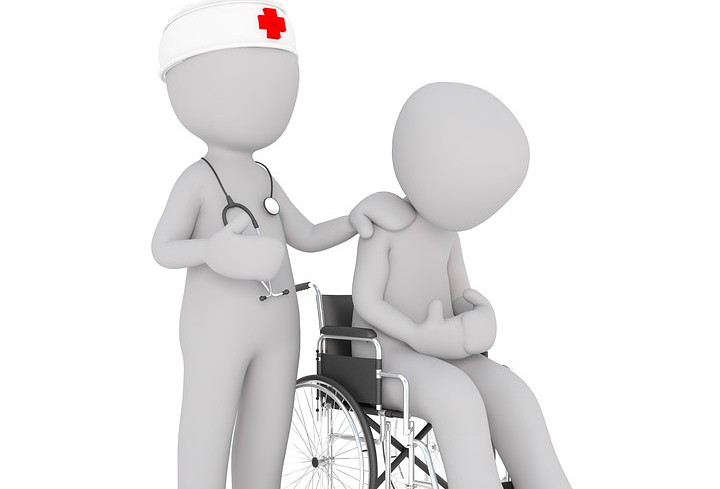
In this blog, we are unwrapping the problems and pitfalls with forgetting to heal the whole person in an effort to establish true and effective wellness. If I had a nickel for every time I heard the words “specialty” or “specialize” in the healthcare field, I would be a very wealthy woman.
These are among the latest buzzwords and for good reason. Given the increased competition and expansion of healthcare options, specialization – even among “natural” or “alternative” health care providers—has emerged as the way to stand out in today’s consumerist economy.
Thanks to a combination of the Internet, increased communication, and a fast-paced economy, competing for the health consumer is only expected to become more and more commonplace in the decade. What is getting abandoned in the clamor to remain competitive as a health provider in either the allopathic or alternative fields is the quality of care.
What once distinguished “alternative” health care providers—mindful and respectful listening to the individual and being present in a way that addressed their needs as a whole person—has gradually been replaced by practicing or promoting the specialty that we have been trained and are experts at.
Critics of allopathic medicine have for a long time pointed to the specialization and fragmentation of health care services as the “demon” preventing the creation of an integrated, whole person health care system. Yet we see alternatives to allopathic medicine being practiced in an identically fragmented, specialized way.
The applications of nutrition, herbs, energy healing, body alignment, yoga, meditation, aromatherapy, and so forth, are primarily offered to the consumer without an integral whole picture of how healing takes place. Specifically, how our body functions as an integrated, homeostatic living being and how the specialty sciences that we call “alternative healing modalities” enhance or assist the function of our overall health on a physical, emotional, nutritional, environmental or spiritual level. The modalities of alternative care are now being offered in the same way medical specialties have been over for years; now, we just have more items on the menu to choose from.
It is also concerning is that alternative health care practitioners seem no better educated in integrated anatomy and physiology than most allopathic practitioners. One of the legitimate criticisms of alternative health care is the lack of evidence-based knowledge on the part of the practitioner to explain the effective outcomes from their application.
Alternative practitioners, like their allopathic counterpart who focuses on prescription writing as a cure, are woefully uneducated in the evidence-based sciences of human anatomy and physiology as well as lacking an authentic education and understanding in whole person science.
When I opened my practice in the early 1970’s the alternative practitioner was often seen by the suffering individual who sought their assistance as “an angel of mercy.” Today, it’s quite a different story. It is a sad testimony to the popularity of alternative health care that in the dawn of the 21st century people are more confused, less informed and even less aware of how their bodies work and how to take care of themselves over their lifetime than they were thirty years ago! Still too many are forgetting to heal the whole person.
Today I repeatedly overhear people confiding that they are disappointed with the alternative health care profession, and feel that there is the same focus on selling product or treatment plans as there has been in the medical practices they used to turn to. No longer do alternative practitioners spend the time they once did explaining and demystifying the process of disease and the cause and effect of where it comes from, but rather are busy selling the latest product of their trade or re-scheduling people for their next ten visits of care.
Economic success has come to alternative health care and with it the same issues that have plagued the practice of allopathic medicine for many years. Success is a strange bedfellow. If we lose the very essence that crafted our field then we have lost our personal and professional integrity.
The philosophical foundation of alternative health care is the knowledge and ability to address the whole person rather than just one isolated aspect of health. The five aspects of health include the physical, environmental, spiritual, nutritional and emotional. The specialization of alternative health care attacks the very core of this practice.
Modern practitioners are continuously specializing in physical areas of the body or specific conditions or diseases such as chronic fatigue syndrome or environmental allergies. This specialization is creating isolation where practitioners are failing to treat the whole person. Countless studies have shown the effectiveness of treating the whole person in a relationship-centered, education-focused model of practice.
In our roles, whether as allopathic, alternative or holistic health practitioners, whole health coaches, or holistic nurses, we must establish and promote a practice of treating the entire person and addressing the bigger picture of their illness or presentation. Given rapidly rising chronic diseases such as diabetes and obesity, it is our duty to remain true to this integral approach to healing and serve our patients in the way they want and need us to.
I encourage this initiative to health practitioners across the country: Fight specialization and favor treating the Whole Person. It is only with such an approach that we can begin to solve that which ails us.
- For additional information, read this blog: How Is Whole Health Care Different?






